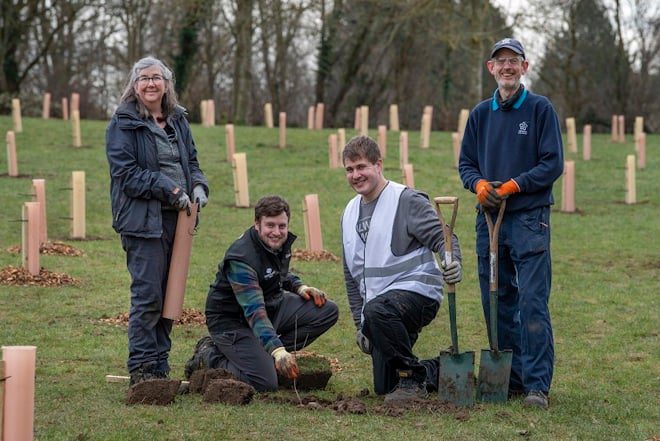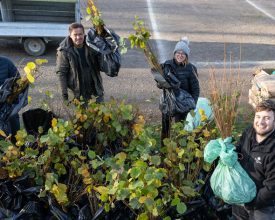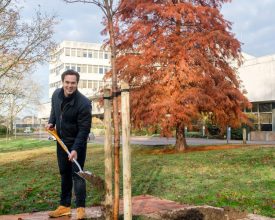Hundreds of new trees and shrubs are being planted at Knighton Park as part of a scheme to promote more environmentally friendly planting.
About 400 saplings and 200 shrubs – a mixture of native broadleaf species including beech, oak, blackthorn and field maple – have been supplied to Leicester City Council at a large discount by The Woodland Trust, as part of its MOREwoods project to help landowners create and manage new native woodlands all across the UK.

Planting started on February 9, to extend the new wooded area close to the Palmerston Way (ring road) car park entrance to Knighton Park. Another, new area of planting will be established at the pedestrian entrance on Palmerston Way.
City council parks staff will be trying out a new, environmentally friendly approach to the planting, which doesn’t use herbicides as a pre-treatment for the grass prior to planting.
The work complements the Saving Saffron Brook project, which is taking place along the banks of the Wash Brook in Knighton Park, as well as at other destinations across the city. River destination points, with new signs and seating, are being created in the park, while work in the spinney area has been carried out to support rare species of plants.
The Saving Saffron Brook project is being carried out in partnership with the Trent Rivers Trust and with support from community groups including Knighton Wild and the Friends of Knighton Park, which will be running free, family-friendly events throughout the year to tie in with the park’s 70th anniversary.
Deputy city mayor for transport, clean air and the climate emergency, Cllr Adam Clarke, said: “We’re carrying out this trial tree-planting technique in response to calls for change, to ensure that new planting is as environmentally friendly as possible. Similarly, we have stopped using glyphosate to control weeds in public spaces, instead controlling them using mulch – and saplings are being supported with plant-based biodegradable tubes rather than plastic ones.
“These are just some of the ways in which we’re committing the principles of our plans to support biodiversity and minimise the impacts of the climate emergency.
“Alongside this important work, we’re continuing with our fantastic Saving Saffron Brook project, which has already seen more than 700 people get involved and more than 2,500 hours of volunteering contributed to help make this urban waterway a haven for wildlife, as well as a natural defence against flooding and climate change.”
Jack Starbuck from the Woodland Trust added: “It is brilliant that the Woodland Trust has been able to support this project through our MOREwoods scheme. As the UK’s largest woodland conservation charity, we have a vision of a world where woods and trees thrive for the benefit of people and nature, and trees in urban areas are brilliant at both; improving air quality, moderating temperatures and absorbing CO2, as well as helping to support local wildlife. The Saving Saffron Brook project is a great example of partnership working to deliver high-impact projects with a lasting legacy for local residents.”
More information about the Saving Saffron Brook project, including how to get involved, can be found at: www.leicester.gov.uk/saffronbrook






